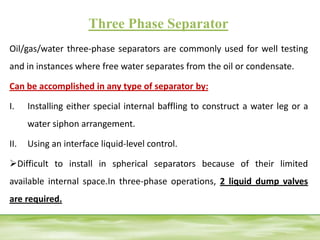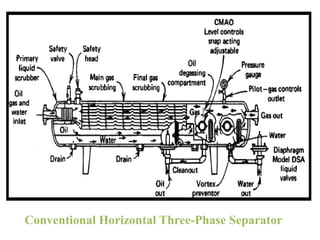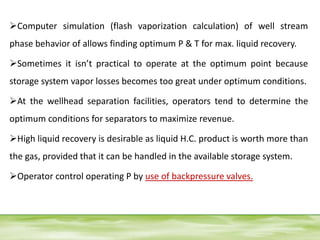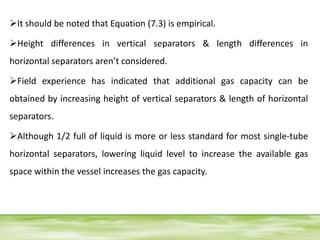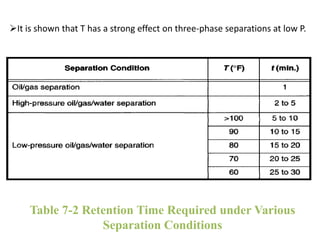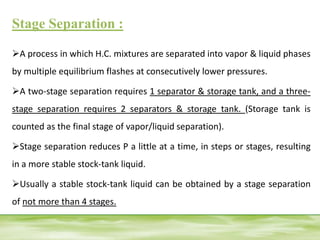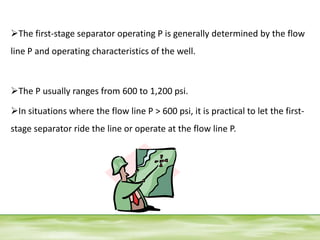Three-phase separators are used to separate oil, gas, and water. Factors like operating pressure, temperature, and fluid composition affect separation. Optimum separation points can be found through computer simulation. Operators aim to maximize liquid recovery while meeting pipeline requirements. Low-temperature separation improves recovery by lowering the operating temperature of separators.
